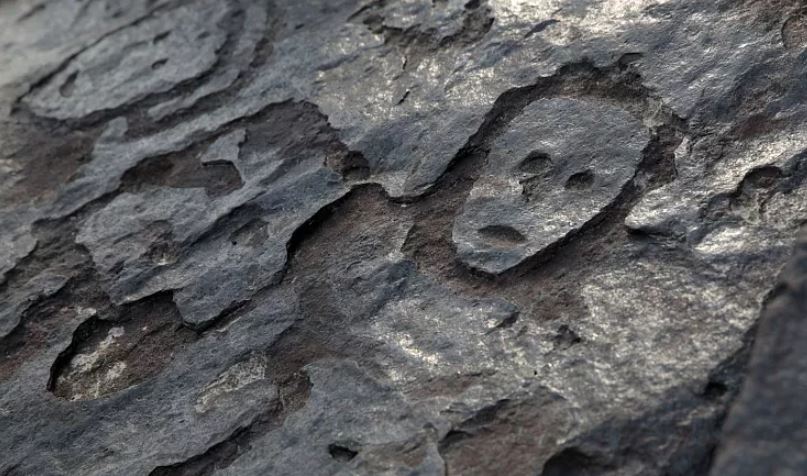Due to the unprecedented drought in Brazil, river water levels have dropped dramatically, making visible rock carvings depicting human faces, which were made thousands of years ago.
The rocky area has ancient faces DiscoverIt is called Punto das Lajes, meaning the place of the boards. It is located on the northern coast of the Amazon, at the confluence of the Rio Negro and Solimo rivers, near the city of Manaus. Some carvings, also depicting animals, had already been discovered in 2010, but the drought this year was more severe than then, so additional carved figures became visible. The water level in the Rio Negro has dropped by 15 meters since July, exposing large areas of rock and sand that were previously covered by water. The drought is severe, the lowest water level since official records began 121 years ago.
According to experts, the combined effect of climate change and El Niño has caused water levels in the Amazon River in northern Brazil to drop to a record low, isolating some communities from each other and devastating the fauna there. The authorities are striving to deliver food and water to thousands of isolated communities in the vast region where there are no roads, and where shipping is the only means of transportation.
Due to the drought, several types of stone carvings are now visible, and this can help researchers determine the origin of the shapes. At one site, for example, smooth grooves can be seen in the rock, which archaeologists believe is where indigenous people sharpened their arrows and spears, long before Europeans arrived. Jaime de Santana Oliveira, an archaeologist at the National Institute of Historical and Artistic Heritage, which oversees the preservation of historical sites, says: TellThe inscriptions date back to prehistoric or pre-colonial times. Although the exact date of their origin cannot be determined, based on evidence of human settlement in the area, researchers believe that they are approximately 1000-2000 years old.
Brazilian Government Disaster Warning Center, Simaden according to Some parts of the Amazon have not seen this little rain between July and September since 1980. Brazil’s Science Ministry blames the drought on the onset of the El Niño weather phenomenon this year, which is causing extreme weather events around the world. The ministry said in a statement earlier this month that the drought is expected to continue until at least December, when the effects of the El Niño phenomenon are expected to reach their peak. The drought has affected 481,000 people since Monday, according to the Civil Protection Agency in Amazonas state, where the city of Manaus, the site of the ancient sculptures, is located.
(Cover photo: Umi Baydoun/Reuters)












































